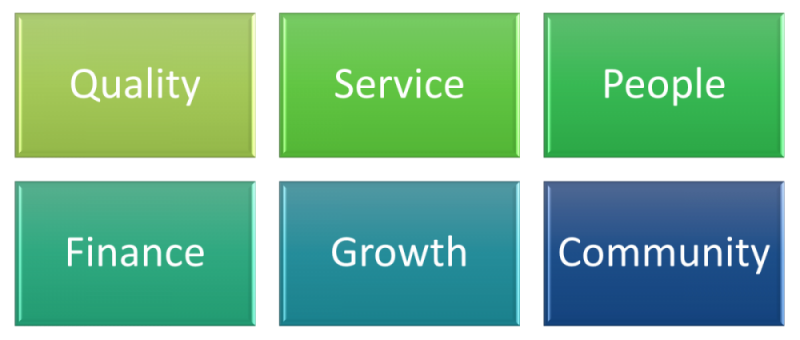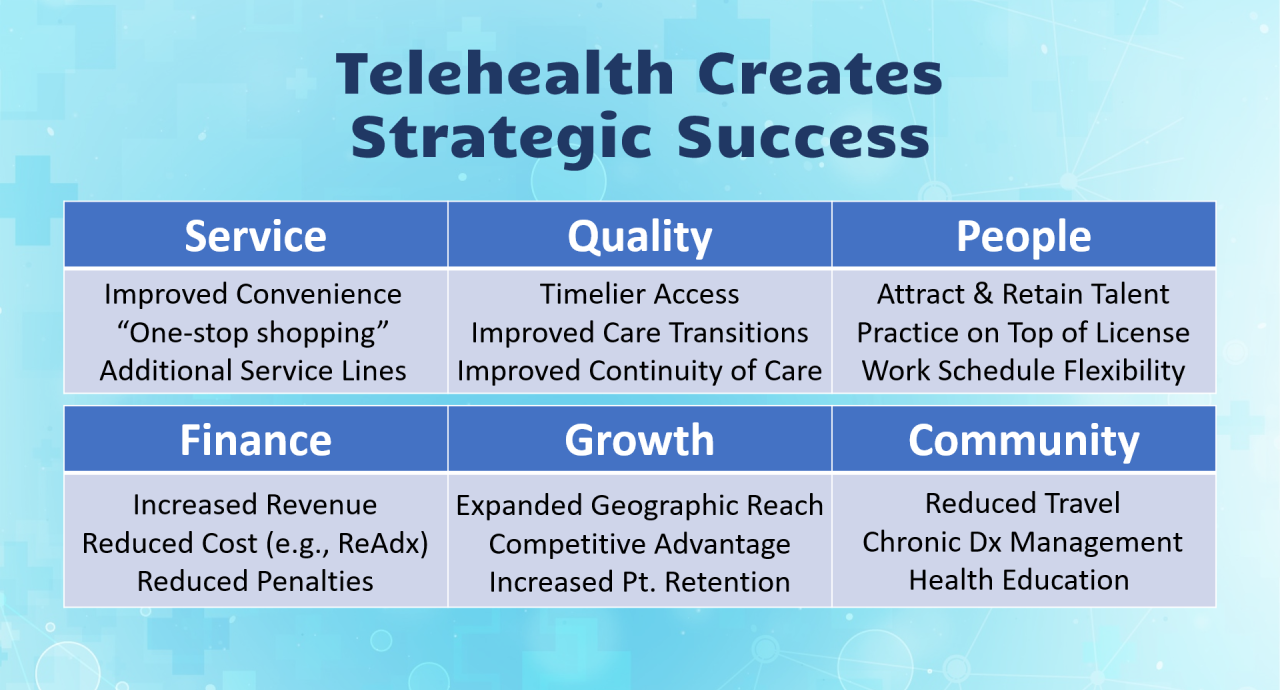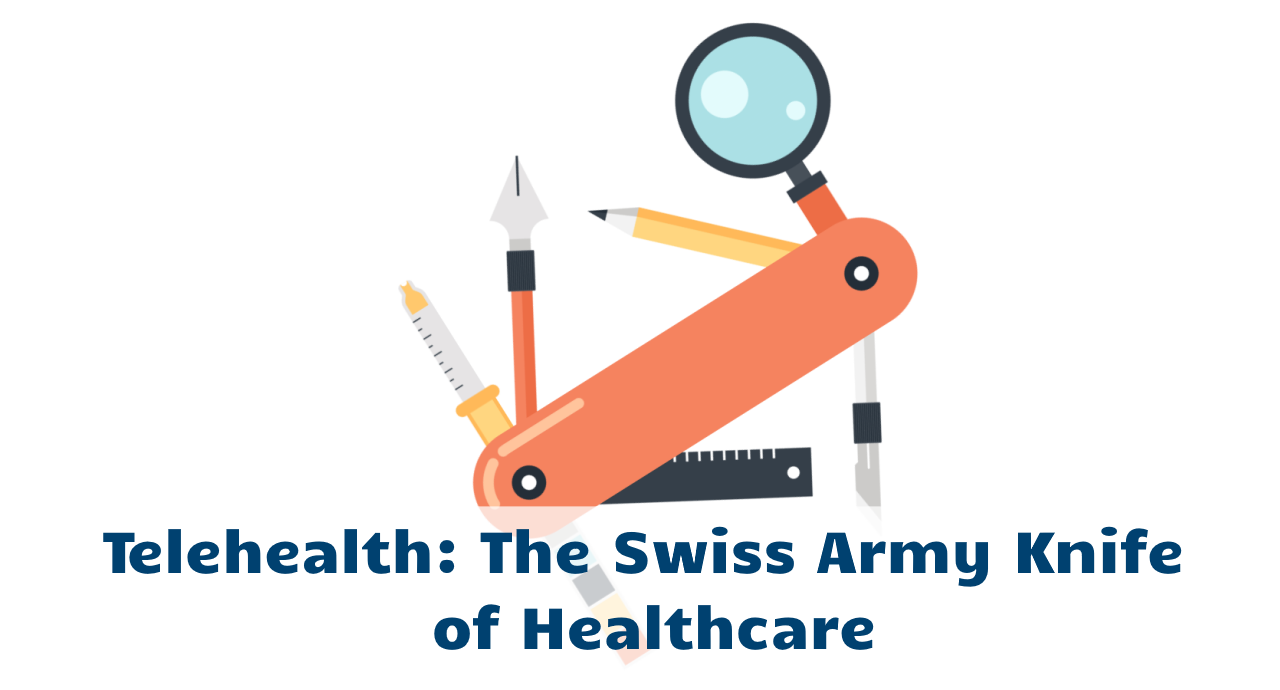Most Healthcare Organizations’ Strategic Plans follow pretty much the same blueprint, covering the same five or six “pillars”, including quality, service, people, finance, growth and community.
As Healthcare Organizations’ maturity regarding the use of digital health and telehealth technologies improves, healthcare leaders can start to leverage telehealth and digital health solutions strategically by using them to drive their strategic outcomes, rather than merely using telehealth to support the objectives.



Quality
Quality in Healthcare is often defined as clinical excellence regarding patient outcomes and through the required quality/reporting metrics defined by rules and regulations.
With regard to patient outcomes and other common clinical quality metrics, telehealth can move the needle in the right direction in many ways. For example,
- remote physiologic monitoring (RPM) can be used for readmission prevention, chronic care management, or even to support hospital-at-home services
- pre-admission tele-screening or tele-rounding in nursing homes reduces unnecessary ER utilization or admissions;
- access to specialty services for patients with chronic diseases (e.g., asthma) can improve therapy compliance due to fewer missed appointments.
- improved ease of access to specialty care (including behavioral health) can lead to fewer or zero no-shows resulting in improved continuity of care
Service
From a customer service perspective, telehealth — especially convenient access for the appropriate services, such as follow-up visits or consults without the need for an exam — can provide a high-quality customer experience and send satisfaction and net promoter scores through the roof. In 2019 we launched a telepsychiatry service for patients in rural Maryland (with a provider from Texas) and the net promoter score consistently has been between 75 and 80. Patients love the convenience and the mere fact that otherwise they’d have to travel an hour or more to get access to psychiatric services.
But service is not only about access or about the experience, but also about the breadth of service offerings. Here, too, telehealth can help to bring new services such as genetic counseling or pediatric cardiology as a service offering to organizations.
People
Healthcare, like any other service industry, is ultimately about people. Healthcare, unlike any other service industry, has also the most complex multi-stop service delivery process. Just count in your mind the number of staff you are likely to interact with in an urgent care service, let alone a hospital visit for a procedure with an overnight stay. From the moment you schedule your appointment to the time the bill is paid, dozens if not scores of people are involved in rendering all aspects of that service.
Since the creation of a new telehealth service is an exercise in clinical care design (and not merely a technology implementation), it presents a wonderful opportunity to redesign the processes and workflows by which that service is rendered. It is through the engagement of physicians and nurses and schedulers and billing analysts that in my work with healthcare organizations I not only get the buy-in to minimize the impact of these big organizational changes, but achieve the design of workflows that lead to a high degree of engagement and satisfaction.
Additionally, telehealth and digital health experience is quickly becoming a “must” on clinical resumes and the best talent in the marketplace recognizes the need for opportu-nities to learn these “new” technologies so as to not be left behind.
Telehealth is therefore a great tactical tool for organizations to improve staff satisfaction and to attract and retain the best talent, by offering experiences in redesigning the delivery of care.
Finance
The financial sustainability of telehealth is critical if telehealth is to be used as a key tool to ensure the long term success of your organization. In the early decades of telehealth, many projects were grant funded which most often not only covered the technology, but also paid for the clinicians’ time and services. But when the grant money ran out, the technology stayed, but the providers left, as they were no longer getting paid for their service.
These days, thankfully, numerous business models exist that make telehealth at a minimum a financially sustainable service and ideally a highly lucrative offering that can offset some of the less-profitable areas of healthcare.
On the one end of the spectrum are the telehealth services for which there is direct 1:1 reimbursement, which is the case in many circumstances, but not all. There are a number of payors who are trying to pay less (up to 50% less) for the same visit rendered via telemedicine, though some payors are reversing course on this controversial approach. It is true that if a physician only renders services from the comfort of their home office while the patient is at home, their overhead cost would be close to zero. But very few practitioners who are getting started in telehealth operate that way, typically running telehealth services in parallel to their brick and mortar practice. But for the most part, patient populations across all three major payor groups (commercial, Medicaid, and Medicare) can be identified for which a fully reimbursable telehealth service is possible.
On the other end of the spectrum are telehealth services that increase revenue either through an expansion of the geographic market or through direct or indirect savings. One of my favorite telehealth use cases in a financially sustainable telehealth services portfolio is remote physiological monitoring for the purpose of readmission prevention. Not only do healthcare organizations save money on the avoidable, non-reimbursable admissions (within the first 30 days in most circumstances); oftentimes the reduction in reimbursement rates can lead to elimination of penalties or the qualification for bonuses as well.
One client I worked with experienced a $1.8M penalty in one year, compared to a $1.2M bonus in another fiscal year – a $3M swing. Add to that a variable cost per admission of $5-$8k, and the investment in remote physiological monitoring can very quickly yield a very lucrative return on investment.
In the middle-spectrum of financially feasible telehealth services are those that expand access to care by expanding the geographic areas, or telehealth services that act as a feeder into the more profitable service lines of your health system.
Overall, though, no telemedicine service, aside from the initial startup cost, should be launched without a proof of long-term financial sustainability.
Growth
Somewhat related to the last point is the ability to leverage telemedicine for growth. This could be geographic growth or growth of the utilization of a specialty service.
By bringing in external expertise through telemedicine from regional partners, smaller health systems can also position themselves as the one-stop-shop experience without the need to travel for hours to the nearest academic medical center.
Another area of growth is that telehealth, as referenced in last week’s article’s “People” section, can also be used as a recruitment (and retention) tool by offering future-conscious staff the option to add experience with telemedicine to their resume.
Community
Many clients I’ve worked with are very community-oriented and work very hard to be a good citizen in the community – not only as an employer but also in the breadth and depth of clinical services. With an increase in rural hospitals and physician practice closures, access to good medical care is increasingly difficult.
Telehealth offers the opportunity to provide a large portion of healthcare services to the surrounding communities without the need to run a full-fledged brick-and-mortar operation. A partially staffed office can serve as a telehealth clinic and provide visit and exam capabilities at a very low cost.
And the impact on the community is huge. One healthcare organization in a rural state in the Northwest reported 42,000 miles of driving (or 2,000 hours in the car) saved from just over 500 telehealth visits. Patients who stay in their hometown are also more likely to shop there and have more time to spend with their family and in their community vs. being on the road for 1-2 hours for a 20 min appointment. The no-show rate? It went from over 30% to just 2% for telehealth appointments.
Once an organization gets in touch with the local community organizations to identify the key health problems, the health system can really make a big difference in their communities by offering help to those who need it most.
Use Telehealth to Drive Organizational Strategy



Looking to Telehealth to realize your organization’s strategic goals is definitely a new way of thinking that will find its way into more and more annual strategic planning retreats.
I predict that in a few year’s time, more and more organizations may actually switch the order of their conversations by putting the discussion about what’s possible and needed through telehealth first, letting telehealth actually drive and define (and not merely support) the organization’s strategic goals.
For more information and ideas you can see this article on “How Telehealth Creates Strategic Success”.








To receive articles like these in your Inbox every week, you can subscribe to Christian’s Telehealth Tuesday Newsletter.
Christian Milaster and his team optimize Telehealth Services for health systems and physician practices. Christian is the Founder and President of Ingenium Digital Health Advisors where he and his expert consortium partner with healthcare leaders to enable the delivery of extraordinary care.
Contact Christian by phone or text at 657-464-3648, via email, or video chat.







Leave A Comment